This guide applies to those living and working in an earthquake area on how to prepare, as well as to journalists covering the aftermath of an earthquake.
What Can Go Wrong?
- Damage to or collapse of buildings. Office windows blown in and injuries sustained from flying debris/items.
- Danger of ruptured gas and sewerage pipes and bare electrics.
- Hazardous material leaks from factories or damaged container trucks etc. Asbestos or other hazardous building materials exposed.
- Infrastructure and local services compromised including utilities, communications, transport and availability of food/water.
Legal/���˿��� Requirements
- There are no specific legal requirements to draw to your attention; you must still apply the control measures that are relevant to your activity.
Control Measures
If indoors
- DROP to the ground; take COVER by getting under a sturdy table or other piece of furniture; and HOLD ON until the shaking stops. Or cover your face and head with your arms and crouch in an inside corner of the building.
- Stay away from glass, windows, outside doors and walls, and anything that could fall, such as lighting fixtures or furniture.
- Stay in bed if you are there already. Hold on and protect your head with a pillow. But if you are under a heavy light fixture that could fall move to the nearest safe place.
- Use a doorway for shelter only if it is in close proximity to you and if you know it is a strongly supported, load bearing doorway.
- Stay inside until the shaking stops and it is safe to go outside. Research shows most injuries occur when people inside buildings attempt to move to a different location inside, or try to leave.
- Electricity may go out or the sprinkler systems or fire alarms may turn on.
- DO NOT use the elevators.
If outdoors
- Stay there.
- Move away from buildings, streetlights and utility wires.
- Once in the open, stay there until the shaking stops. The greatest danger exists directly outside buildings, at exits and alongside exterior walls. Ground movement during an earthquake is seldom the direct cause of death or injury. Most earthquake-related casualties result from collapsing walls, flying glass, and falling objects.
If in a moving vehicle
- Stop as quickly as safety permits and stay in the vehicle. Avoid stopping near or under buildings, trees, overpasses, and utility wires.
- Proceed cautiously once the earthquake has stopped. Avoid roads, bridges, or ramps that might have been damaged by the earthquake.
If trapped under debris
- Do not light a match.
- Do not move about or kick up dust.
- Cover your mouth with a handkerchief or clothing.
- Tap on a pipe or wall so rescuers can locate you. Use a whistle if one is available. Shout only as a last resort. Shouting can cause you to inhale dangerous amounts of dust.
What to do after the shaking stops:
- Check yourself for injuries. Protect from further danger by putting on long trousers, a long-sleeved shirt, sturdy shoes, and work gloves.
- Check others for injuries. Give first aid for serious injuries.
- Extinguish any small fires.
- Expect aftershocks. DROP, COVER, AND HOLD ON!
- Inspect building for damage. Get everyone out safe.
- Phone into ���˿��� local office / Your Manager / Safety Team to report, but bear in mind local authorities may be inundated with emergency calls, so only call in to emergency services if in need of emergency assistance
- If overnighting in affected area – no building is ideal, but 1 story buildings safest. Sleep near the exit and be ready to move quickly to a sturdy pillar or doorway. If leaving the building when the shaking has stopped remember it can fall sideways, get well clear and be aware of objects falling.
How to prepare yourself if working/living in an earthquake area
- Put together an Earthquake Plan (see sample in Related Documents).
- Have an emergency grab bag available. It should include – torch or light sticks, bottled water and water purification tablets, trauma first aid kit, mobile phone (charged) or sat phone, portable radio, spare batteries (for both torch and radio), shovel, emergency space blankets, wrench or other tools for use if shutting off utilities, chocolate/sweets, personal items as required including medication, spare clothing and shoes.
- Checking with the local authorities about their activities and earthquake plans.
- Consider using an earthquake alert service like the one offered by the US Geological Service.
- Or an app like 'Earthquakes Alert' (see Recommended Links)
Division Specific Issues
- No division specific issues.
FAQs/Did You Know?
- Aftershocks are very common following Earthquakes. An aftershock can be bigger than the previous earthquake – so always be prepared.
- Our section on Disaster Coverage gives more guidance for teams planning on covering an earthquake.
Useful documents
Recommended links
-
[���˿��� Network only]
-
-
App for iOS
-
Alert System for Android
Dangerous deployment topics
-
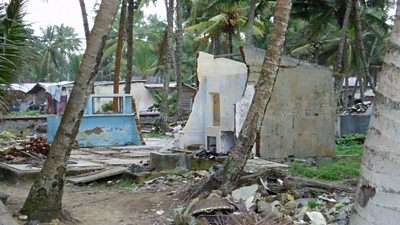
Disaster Coverage
A guide to covering disasters. -
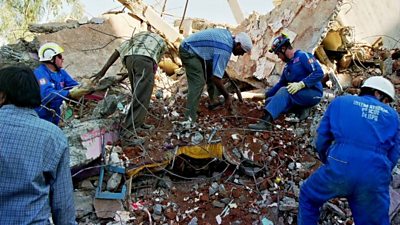
Disaster Coverage - Health Aspects
A guide to health risks when visiting areas subject to natural or man-made disasters. -
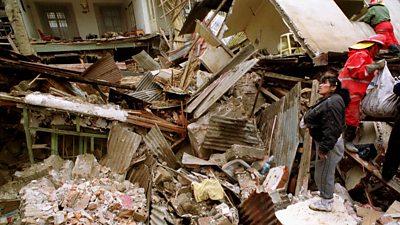
Earthquakes
A guide to working in areas affected by earthquakes. -
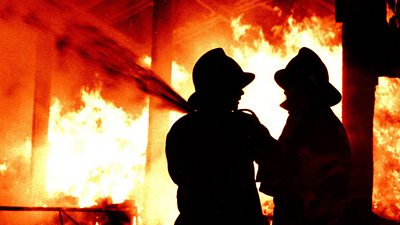
Fires - Buildings and Bushfires
A guide to deployments of journalists and crew to large building fires and bushfires. -

Hostile Environments
Hostile Environments and Travel Advisory information and Country List -
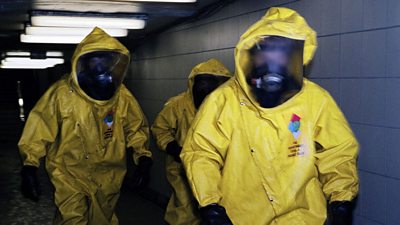
Industrial Spills and Chemical, Biological, Radiation Hazards
A guide to chemical, biological and radiation related hazards. -
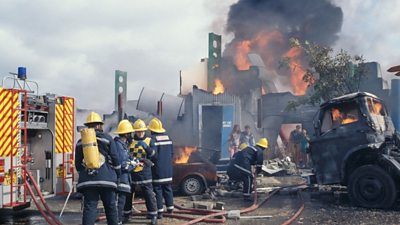
Trauma and PTSD
A guide to dealing with trauma or a traumatic event. -

Safety Equipment Stores
Our safety equipment store details -
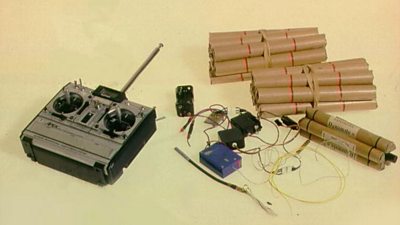
Terrorist Bomb Incidents
A guide to covering bomb story threats
More from SSR
-
Your platform to record accidents, risk assessments, assurance monitoring and inspections
-
Safety Equipment Stores
Just one number to call: 020 3614 5155 -
���˿��� Safety Guidelines
An A-Z of ���˿���'s Health and Safety Guidelines -
Safety Advice Line: 0370 411 0464 Email: safety@bbc.co.uk
- A-Z of ���˿��� Safety Guidelines
- Accident Reporting and Investigation
- ���˿��� Health & Safety Policy
- Contractors (incl. vetted lists)
- Contributors
- Fire Safety
- Freelancers
- Independent Production Companies
- Risk Assessment
- Safety Alerts
- Safety Responsibilities
- Safety Training
- Sets & Premises Safety Guide
Events guidance - key links:
- Exhibitions
- General Guidance
- Indoor Location Recce Checklist
- Outdoor Location Recce Checklist
- Major Incidents & Emergency Planning
- Marketing and Promotional
- Noise Exposure
- Planning and Management
- Responsibilities
- Responsibilities Form
- Laser Lighting Effects
- Strobe Lighting
- Temporary Stages and Rostra
Health topics - key links:
- (���˿��� network only)
- Contributors Fitness to Participate
- Display Screen Equipment (DSE)
- (���˿��� network only)
- First Aid and Welfare on Location
- International Travel - Risks & Health
- Manual Handling
- Mental Health: ���˿���page
- (���˿��� network only)
- Personal Health and Wellbeing
- Pregnancy
- Psychological Trauma Support & Trauma Risk Management (TRiM)
- Tiredness and Fatigue
- Travel Health Contacts
���˿��� High Risk - key links:
- CBRN and Industrial Spills
- Covert Filming
- Crisis Management and Security Support
- Demonstrations, Protests and Crowds
- Disaster Coverage
- Door Stepping
- (���˿��� network only)
- (���˿��� network only)
- Public Order
- Safety Equipment Stores
���˿��� Journalism - key links:
���˿��� Productions - key links:
- Aerial Filming and Airfields
- Animals: Displaying and handling for performance
- Boats: Working on
- Children and Young People
- Driving
- Electrical Equipment and Systems
- First Aid and Welfare on Location
- Food Safety (Cooking and Catering)
- Remote Location Working
- Roads and Streets: Working by
- Security of Productions on Location
- Stunts
- Tiredness and Fatigue
- Unmanned Aerial Systems (UAS aka Drones)
- Vehicles: Recording in, from and around
- Working at Height: Mobile Elevating Work Platforms
- Working at Height: Tower Scaffolds
���˿��� Radio - key links:
- (���˿��� Network only)
���˿��� Security - key links:
���˿��� Sport - key links:
About this site
This site describes what the ���˿��� does in relation to managing its health, safety and security risks and is intended for those who work directly for the ���˿���.
It is not intended to provide instruction or guidance on how third parties should manage their risks. The ���˿��� cannot be held liable for how this information is interpreted or used by third parties, nor provide any assurance that adopting it would provide any measure of legal compliance. More information
Some links on this site are only accessible when connected to the ���˿��� network
